 By Carol Gray, LMT, CST, RPYT, ERYT-200
By Carol Gray, LMT, CST, RPYT, ERYT-200
I recently reflected on a meeting I had a few years ago with second-time expectant parents. As their three year old played with toys in my living room they told me about the parenting challenges they had weathered since the last time I was their midwife. They had a great home birth the first time around, but wondered why they had focused so much energy on preparation for birth and so little energy on preparation for parenthood.
It’s made me wonder about some things:
Where Is the Parenting Preparation and Support?
About 70% of expectant American parents attend childbirth preparation classes. Parenting is not the main theme in these classes, though. The common thread of all these classes is pain coping for labor. In spite of all this pain-coping practice, over 80% of these birthing parents go to the hospital and get drugs for pain relief in labor. Almost all of them will give birth to live babies that will need parenting for many years, yet parenting is seldom covered in the prenatal classes.
What About Postpartum Care Planning?
To me it seems like common knowledge that the early days and weeks after birth can be a fragile, challenging time. It’s also common knowledge that in the US government-sponsored postpartum care and support is almost non-existent. The difference between the kind of care and support home birth midwives provide during this period (in-home visits) and the kind of “care” hospital birthing families get (next to none) is shocking. Yet, when I was a midwife and looked at the statistics for my web site, month after month the page about postpartum care was the least visited page. Clearly, the people who were looking for a midwife were more concerned about the birth than the support they would need after the birth.
Birth Is Instinctive
Birth is part of our sex lives and largely driven by instinctive behavior (unless the process is manipulated by medical interventions – usually the case in America). In spite of the fact that things go well when left undisturbed we don’t usually let nature take its course and instead we go to the hospital where birth is managed and sometimes less safe. Once we are there nearly all of us are subjected to medical interventions that carry risks for birthing parents and babies. We prepare intensely for this event by assimilating obstetric information and practicing ways to cope with the pain. Only, most of us don’t use the pain coping practices in labor and instead opt for drugs in labor.
Parenting is Learned
While instinct plays a role, parenthood is largely culturally influenced and learned behavior. Here’s something that could be influenced by prenatal classes, but it would seem that expectant parents are uninterested.
Safety in the Hospital?
Nearly all American birthing parents give birth in the hospital. When asked why, most will say it’s because they want safety. Home birth for healthy people is as safe or safer than hospital birth in North America. According to the CIA World Factbook, 2018, the US ranks 56th on the world infant mortality list. This means that 55 industrialized nations (who spend way less than we do for health care per person) have a better birth safety track record. These statistics aren’t a secret.
Going to McDonald’s
Many people say they want a “natural” birth yet they go to the hospital and end up with unnatural births. Some of them are shocked afterwards. To me this is like going to McDonald’s and experiencing shock after being served a hamburger.
Why?
About Carol Gray
 Carol is the founder and owner of MamaSpace Yoga. She has been a therapeutic bodyworker in private practice for over 30 years. She specializes in Craniosacral Therapy for pregnant and postpartum people and infants. Carol has spent years developing hands-on techniques to enhance the mobility in pregnant bodies including the bony pelvis, the abdominal organs, the support structures and lower segment of the uterus. She is proud to have pioneered the integration of this gentle manual therapy into prenatal care, the birth place and postpartum care for birthing parents and babies. The goal is to give babies more room to develop, grow and get born. Her specially-designed yoga classes have grown naturally from the roots of bodywork and yoga.
Carol is the founder and owner of MamaSpace Yoga. She has been a therapeutic bodyworker in private practice for over 30 years. She specializes in Craniosacral Therapy for pregnant and postpartum people and infants. Carol has spent years developing hands-on techniques to enhance the mobility in pregnant bodies including the bony pelvis, the abdominal organs, the support structures and lower segment of the uterus. She is proud to have pioneered the integration of this gentle manual therapy into prenatal care, the birth place and postpartum care for birthing parents and babies. The goal is to give babies more room to develop, grow and get born. Her specially-designed yoga classes have grown naturally from the roots of bodywork and yoga.
Carol has dedicated her professional life to supporting expectant and new families by promoting gentle aware birth. She has attended births for over 35 years – at first as a doula and from 2000 to 2012 as a midwife. She has since retired from attending births in order to focus on practicing and teaching CST and prenatal yoga. Her many years as a birth worker have forever changed her and her worldview. Those experiences remain an integral part of who she is as a therapist and teacher.
Carol is the founder and director of the The Carol Gray Center for CST Studies®. She teaches high-quality, small group classes that are appropriate for bodyworkers, birth attendants and other health professionals. She is approved by the National Certification Board for Therapeutic Massage and Bodywork (NCBTMB) as a continuing education approved provider.

